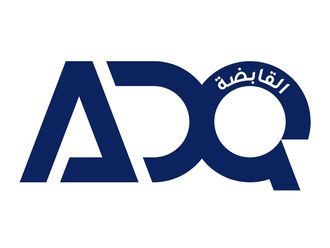Mumbai:
A move by the authorities to slash the number of items by more than three-quarters in the highest national sales tax slab, giving relief to businesses and help lower prices for consumers, should provide a shot in the arm to Indian shares, which posted their first weekly fall in three. However, investors will keep a wary eye on firm global oil prices, which poses a challenge to energy- deficient New Delhi.
On Friday, a meeting of finance officials, including from the states, decided to cut 178 items from the top tax bracket under the Goods and Services Tax (GST), including common-use products like chocolates, cosmetics, personal care, detergents, watches, household items such as fans, sanitary ware, lights, ceramic tiles, cutlery, stoves and cookers. These items will now be taxed at a uniform 18 per cent, effective November 15.
“We’ve limited the number of items in the 28 per cent tax list to 50 items,” said Sushil Kumar Modi, finance minister of the northern state of Bihar. There were more than 225 items in the list.
The companies that would benefit from the downward revision include Hindustan Unilever, Nestle India, Godrej Consumer Products, Havells India, Crompton Greaves, V-Guard, Bata India, Kajaria Ceramics, Somany Ceramics and Finolex.
The GST launched in July was the biggest tax reform since the country’s independence from British colonial rule in 1947, bringing in uniform levies across the nation’s 29 states and seven Union territories. But a four-slab system of rates and cumbersome filing procedures have been a thorn in the functioning of businesses and the government has been trying to ease the rules.
Items including paints, cements, air-conditioners, washing machines and automobiles will continue to be levied at 28 per cent for the time being.
Amit Mitra, finance minister of West Bengal, said his government favoured retaining only tobacco and big luxury items in the highest tax slab.
The authorities also slashed the GST on restaurant bills to five per cent from 18 per cent and brought down the rates on a host of grocery and food items to 5-12 per cent.
Equity strategist V. Venugopal said a smooth functioning GST would be a “game-changer” for ease of doing business, and should contribute more than one percentage point to GDP growth. It will also plug rampant tax evasion, boost government revenue and eventually bring down tax rates for all.
For red-hot Indian stocks, the more than doubling of global crude prices over the past few months is a warning sign because New Delhi imports about 80 per cent of the oil the nation consumes. In the first three years of Prime Minister Narendra Modi’s administration, the slump in world oil prices had provided a bonanza to reduce deficits and help cut subsidies.
With prices of oil climbing by a third since June, the government faces crunch time in the run up to elections in many states and national polls due by 2019. Inflation, which has remained well below the central bank’s threshold, is picking up on volatile food costs and higher fuel prices.
“For a net oil importer like India, a sustained rise in crude oil prices would have adverse macroeconomic implications,” Sonal Varma, chief India economist at Nomura Holdings, said in a report. “Higher oil prices are tantamount to negative terms-of-trade shock that weakens growth, pushes up inflation and deteriorates the twin deficits.”
When Modi took office in May 2014, oil traded at more than $100-a-barrel. Prices then tumbled to below $30, until this June when they began a relentless rise to nearly $65 this week.
Nomura estimates a $10-per-barrel increase in oil would worsen the current-account balance by 0.4 per cent of GDP, widen the fiscal shortfall by 0.1 per cent of GDP, and increase wholesale inflation by about 1.4 percentage points.
Concerns about rising oil prices primarily caused shares to pull back after hitting a spate of all-time highs over the past few weeks. The top-30 Sensex, which is widely tracked by fund managers, skidded 1.1 per cent over the week to 33,314.56 — after soaring to a record 33,865.95 on Tuesday.
The broader 50-share Nifty, which is mimicked by portfolio managers, shot to a new peak of 10,490.45 on Monday, before retreating 1.3 per cent over the week to 10,321.75.
Both the benchmarks are still up around a quarter in 2017, and cash-rich funds are always on the lookout for opportunities.
The board of Mahindra & Mahindra Ltd, the country’s leading maker of utility vehicles and tractors, announced a bonus share issue in the proportion of one-for-one. Earlier this year, energy conglomerate Reliance Industries Ltd, India’s most valuable company at $86 billion, had doubled its share capital through a similar bonus.
Strategist Venugopal said companies, especially with large equity capital, would liberally offer free shares only if they are confident future earnings would be sufficient to service the expanded capital. Mahindra & Mahindra’s quarterly profit rose nearly 25 per cent.
“These are signs of improving business confidence,” he said. “The outlook for companies is better than what it has been in the past few quarters. The rewards of government initiatives — clampdown on unaccounted cash, GST, stepped up spending on large infrastructure projects — will start to show up in increased earnings.”
Modi’s shock decision a year ago to remove 86 per cent of the currency in circulation, Venugopal said, drove hoarded cash piles into the banking system and helped bring down interest rates. Record flows of household savings into mutual funds are the result of demonetisation, which diminished the lure of gold and real estate — two avenues that primarily ran on unaccounted cash.
In the first seven of the current financial year that started on April 1, investor flows into mutual funds more than tripled from the same period a year earlier to Rs. 964 billion, according to data from the Association of Mutual Funds in India. Funds received Rs. 160 billion in October, which was the 19th consecutive month of net inflows.
— The writer is a journalist based in India.











